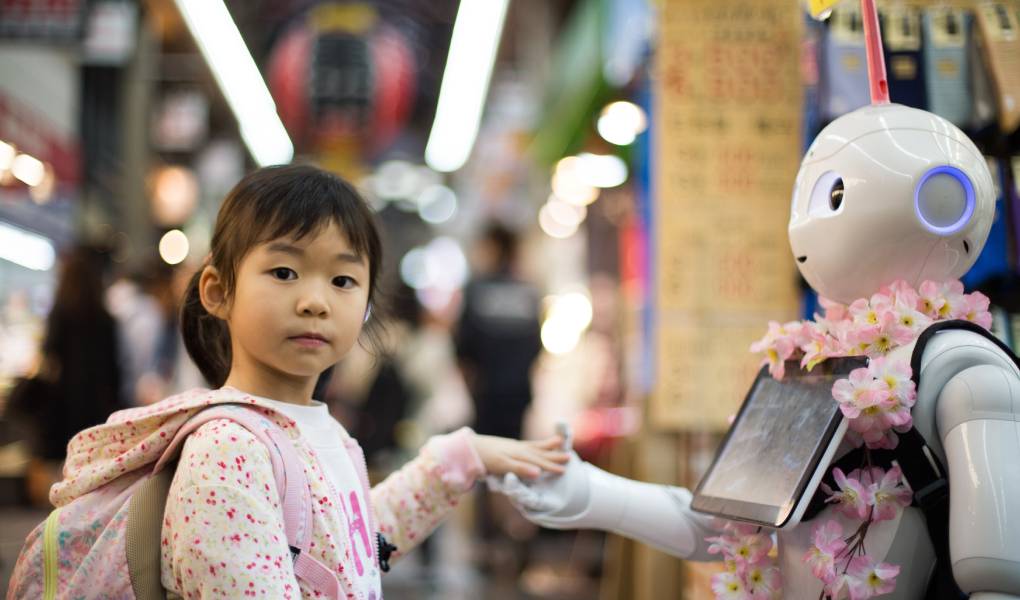We hear about humanoid robots more and more often. And many “famous” cases have colored the news, not only of a purely scientific and strictly technical nature. It is impossible not to mention Asimo, which appeared for the first time in 2000 as the eleventh evolution of previous prototypes developed by Honda – which only later decided to abandon the project. The dimensions of the most advanced model, produced in 2011, are 130 centimeters in height by 48 kilos in weight and can walk effortlessly at almost 3 km per hour, running even at nearly triple the speed.
The dynamic performances are also impressive, considering that Asimo can go up and downstairs, jump on one leg, move the upper limbs and the five fingers of his hands. On the cognitive level, it is also able to recognize the surrounding environment, keep it under control and follow moving objects, and distinguish human beings, whose body posture and intonation of the voice it can interpret.
Next to the machine dedicated to the incomparable Isaac Asimov – science fiction writer father of the term robotics – we find Pepper, who can be defined as a semi-humanoid. This robot does not have legs, which have been replaced by faster wheels, and which support an overall structure of one meter and a half in height for 28 kilograms of weight. Manufactured by Softbank Robotics, Pepper features tactile sensors on the extremities of the upper limbs, sonar, laser, and gyroscope in the base for optimal movement in the surrounding space.
There are two cameras on the face and four microphones, while on the chest, there is a tablet as an additional interaction interface. All this is for a machine commonly defined as a “social robot,” considering its standard artificial intelligence provides an evolved ability to interact with humans. It is, therefore, no coincidence that it can be seen in action in various public places. Next, in airports or hospitals, we have the humanoid robot Reem C, of Spanish manufacture at the laborious forges of Pal Laboratories. At present, it has reached its fourth evolution, equipped with an improved locomotion system – passing from a “simple “wheeled cart with actual humanoid limbs.
It certainly does not stand out for its speed of movement – set at 1.5 kilometers now – but its structure of one meter and 65 by 80 kg allows it to lift and carry up to 10 kg of weight. The most exciting project worthy of mention is RoboThespian, developed and distributed by the British Engineered Arts. In particular, it is a robot that knows how to act and hold the stage thanks to its strong irony and facial expressions with a unique expressiveness in the world of artificial intelligence.
To continue our overview, a clear example of Italian humanoid robots: The result of the Italian Institute of Technology (IIT) based in Genoa is a small robot – we are talking about 104 centimeters in height – which replicates the features of a five-year-old child. With particularly sensitive skin because it is covered with numerous tactile sensors, iCub can crawl, walk, sit, delicately manipulate objects, and even learn to shoot with a bow.
Among robot receptionists, journalists, and presenters – to name a few -, the most representative humanoid robot of all, even today, remains Sophia. A humanoid robot with female features – whose features are inspired by the face of the iconic Audrey Hepburn -was activated in 2015 by researchers at Hanson Robotics. Sophia can talk to people, have her sense of humor, reproduce 62 facial expressions, and express emotions. A heated discussion arose around her figure when, in October 2017, she was presented to the UN and obtained citizenship from Saudi Arabia, thus becoming the first robot in history to be a citizen of a state.
Also Read: How Artificial Intelligence Will Change The Future Of Email Marketing



